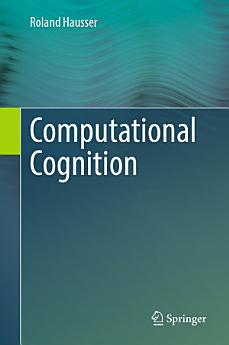Computational Cognition
Tungkol sa ebook na ito
Part I discusses ontological distinctions between a sign-based and an agent-based approach, and continues with explanations of the data structure, the content-addressable database schema; the time-linear derivations of the speak and the hear mode; resonating content; induction, deduction, and abduction in inferencing, and concludes with a reconstruction of eight classical syllogisms as a test suite for DBS inferencing in the think mode.
Part II complements the literal use of language in the speak and hear mode with a reconstruction of syntactic mood adaptations and figurative use. The database schema of DBS is shown to lend itself not only to the tasks of traditional storage and retrieval, but also of reference, coreference, shadowing, coactivation of resonating content, and selective activation.
Part III complements the treatment of individual topics in linguistics, philosophy, and cognitive psychology with an overall software structure in the form of three interacting main components, called the interface, the memory, and the production component.
Tungkol sa may-akda
Roland Hausser is Professor Emeritus for Theoretical and Computational Linguistics at the University Erlangen-Nürnberg and former director of its Laboratory of Computational Linguistics (CLUE), between 1989 and 2011. After obtaining his PhD at the University of Texas at Austin, the author held various positions at Carnegie Mellon, Stanford University or Ludwig-Maximilians-Universität München.
Prof. Hausser has been active and made significant contributions in the fields of Theoretical and Computational Linguistics, Human-Computer Interaction, Formal Grammars and Database Semantics. His research resulted in around 40 journal papers and conference proceedings, and he is the author of the Springer books “Foundations of Computational Linguistics”, “A Computational Model of Natural Language Communication”, “Computational Linguistics and Talking Robots” as well as of the very recent “Ontology of Communication”.







